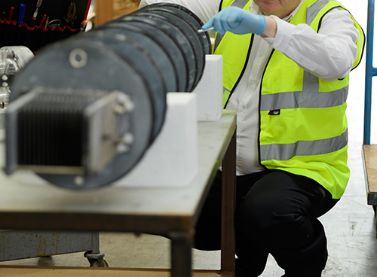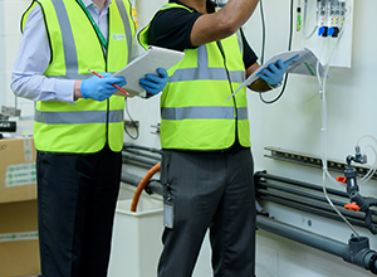An investment in drinking water and wastewater systems is undertaken to protect public health and the environment. However, given the recent economic climate, the decision to move ahead on a capital project is one that should not be taken lightly. Whether you are designing a new facility or upgrading an older site, any capital investment, should include the implementation of measures to protect that capital investment. The most effective way to protect an equipment purchase is to follow manufacturer-recommended maintenance and service procedures and schedules.
An equipment purchase is effectively the start of a long relationship between the purchasing company and manufacturer, going well beyond the installation, start-up and commissioning of a system. As a result, it’s important to focus on the service and maintenance a manufacturer offers throughout the life of the equipment. A simple review of the service offerings will help ensure a partnership with a manufacturer that understands what is required to effectively support their system.
Water and wastewater system operators play an important role in ensuring reliable water and wastewater equipment performance. Proper operation and maintenance of water and wastewater treatment equipment depends largely on the operators and the training they’ve received to support the equipment. Equipment-specific training from a manufacturer at start-up and routinely throughout the life of the equipment is important, especially given the high turnover rate of trained and experienced operators at water and wastewater treatment facilities.
From an operation and maintenance perspective, some of the common deficiencies affecting the ability to follow manufacturer-recommended procedures and schedules include:
- Lack of adequate treatment equipment
- Lack of maintenance equipment
- Poor record keeping
- Absence of O&M manuals
- Lack of regular maintenance
- The absence of replacement parts/ supplies
- On-site sodium hypochlorite generation system - maintenance profile
For more than ten years, on-site sodium hypochlorite generation has gained increasing acceptance as an alternative form of disinfection treatment in water and wastewater applications. De Nora ClorTec® systems generate a 0.8 percent sodium hypochlorite solution on demand by combining salt, water and electricity to provide a stable source of disinfection. While ClorTec systems are easy to maintain, they do require daily, weekly, monthly, quarterly and yearly maintenance to ensure operation at optimum levels.
An efficiency test is done at the start-up of any ClorTec® system. This testing confirms the performance levels (operating temperature, sodium hypochlorite solution addition, etc.) required for the constant production of a 0.8 percent sodium hypochlorite solution using set salt and power consumption levels. Following the manufacturer-recommended maintenance and service schedules after start-up will help to maintain the same efficiency levels, ensure compliance with warranty requirements and provide economic benefits to the end user.
When properly maintained, the equipment can be used for the full intended life, and unnecessary replacements and repairs can be avoided, leading to cost savings. Well maintained systems will experience less unplanned downtime, lessening the need to purchase a back-up method of disinfection and reducing the requirement of manpower to attend to unplanned maintenance.
Maintaining a consistent solution strength also is key to the overall performance – not only of a ClorTec® system, but of ancillary equipment used with the ClorTec® system as well.
For example, an inconsistent solution strength places strain on chemical feed pumps when additional disinfectant (residual) is required. As a result, the pumps incur unnecessary wear and tear and increased manpower to address any problems that arise.
Two final ways to ensure the highest level of performance of any water or wastewater equipment are to consider manufacturers’ parts or maintenance contracts and to use only manufacturer-recommended spare parts.
Water and wastewater equipment is no different than any other major capital investment. Following manufacturer recommendations and proper maintenance are the best ways to ensure a long and productive life.




